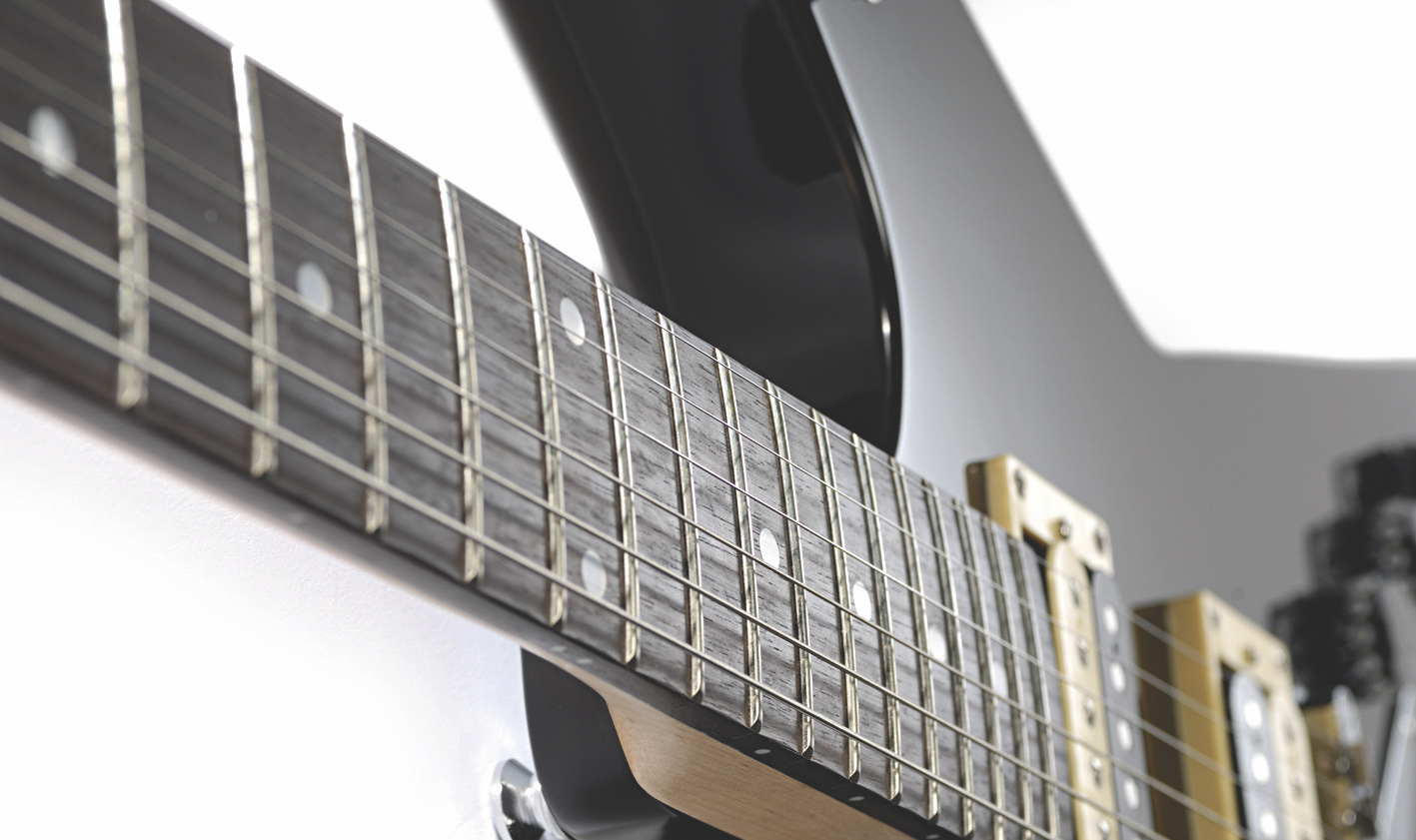How to Keep Your Fretboard and Strings Slick and Fast
A veteran tech dishes on how sliced salami, chapstick, or 3-in-1 oil can fix your sticky fretboard. Just don't use WD-40!

This is a classic GP column by Gary Brawer, a guitar tech whose clients include Joe Satriani, Metallica, and Neal Schon.
Sticky fretboards – we’ve all been there: trying to bend notes and sticking halfway through the bend, sliding up to a note only to chatter on the fretboard as you move around.
From the repair side there are some precautions we can take to keep the fretboard and the strings slick and fast. As a player there are a number of traditional and non-traditional things you can try.
I was inspired to do some research after this recent experience: I was working a gig with Neal Schon, who was opening the show playing with Santana and then closing with Journey – a long, hot, sweaty show. Before he went on, I was handed a plate of sliced salami to set on his amp.
Early in his career there was a great deli next to his rehearsal space known for their salami sandwich. After eating it, Neal noticed his fingers were slick when he picked up his guitar. (Oddly enough, Wes Montgomery was said to do the same thing.) If you have heard him play, it works! I have been working on his instruments for 20-plus years and I have seen no ill effect on his guitars, nor can I smell a thing.
Some other homebrew tricks I have heard about include Jaco’s greasy chicken bone he is said to have kept in his case and Steve Cropper using chapstick to not only slick up his strings but to also take some of the brightness out of them.
A guy I used to work with had an old 1960 SG/Les Paul, and he rubbed 3-in-1 oil into his fretboard with his fingers really fast so it heated up. I though he was nuts but it was the best feeling fretboard ever! I personally would go with mineral oil. I think it is a little safer with fewer chemicals.
All the latest guitar news, interviews, lessons, reviews, deals and more, direct to your inbox!
One thing to stay away from is WD-40 or anything with silicone in it. People have asked me about that over the years and I have seen it gum up fretboards and actually make things worse.
Maybe you want to try something but want to be a little more conservative in your experiments. Fast Fret and Finger Ease have been on the market as long as I can recall. They are both still available and worth a try. Another interesting product is Chops PrePlay from Graphtech.

They claim it balances your skin’s pH, which should prevent corrosion of your strings and hardware while adding natural oils to you hands to slick up the feel of playing. I don’t know about all of that, but I like the way it feels.
If you have ever seen Jeff Beck or Richard Thompson play, maybe you have seen a white dust cloud. That’s baby powder or talc powder. Graph Tech now offers a powder called Dry Glide.
You can make your fretboard feel better without adding anything just by cleaning it. If, when you’re done, it is still too sticky, try lightly wiping down the ’board with Bestine (rubber cement thinner from art stores). It is one of the few solvents that cleans without hurting any finish or leaving any oil or residue. When all else fails I find that works like a charm!
